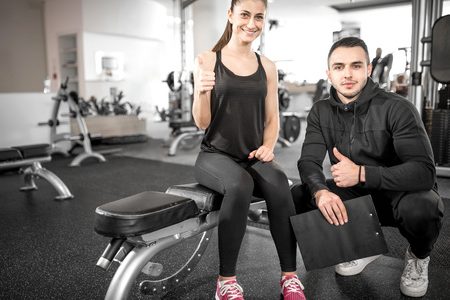
With the cost of higher education continuing to skyrocket, prudent parents nationwide are not only trying to pad their savings accounts but are also actively seeking any and every scholarship opportunity available for their children.
In some families, financial rewards for academic prowess remain a high priority. Many others, however, strive to gain an athletic edge for their teen that will make attending a top university more affordable. Beginning as early as grade school, youngsters are being identified as exhibiting true athletic promise; and many parents grab onto this dangling carrot and do everything within their power to groom their young athlete into a college-bound recruit.
Youth training and coaching have evolved into a $4 billion industry, the majority of which is spent developing young athletes who hold true promise for a future in a sports-related industry. While this bodes well for the next decade of the NBA and NFL, personal trainers and coaches may be missing out on a vital and very important group of clients: the 14-18-year-old female.
In the face of today’s tremendous social pressure, underscored in large part by Internet media sites, female teens are crying out for support. These developing young women need the proper mentoring and guidance that will help them navigate the maze of potentially dangerous messages that promote disordered eating and a self-image seemingly contingent upon appearance and the approval of others. As fitness and wellness professionals, it is incumbent upon us to be aware of the pitfalls into which so many teenage girls fall, and to help pave a healthier path for them to pursue. However, as is so often the case, these young women perceive extreme dieting as the panacea for a troubling body image.
Well-meaning parents often come to us seeking guidance for their daughters. This is where we must be clear with regard to the identity of the true client: Is it the teen herself whom we are attempting to please, or the adult who is paying for our services? While it may be tempting to choose the latter, it is ultimately the girl herself who is in need of special handling, once she has been convinced to enter the gym.
For many female teens, “fitness” is a domain inhabited solely by physical education teachers; it may not even be within their vocabulary when describing the top goals in their busy lives. Social media has put forth the iconic image of thinness as the ideal, causing many girls to shy away from the gym for fear of “bulking”. Those who do consider trying to stay in shape might avoid the gym because they feel silly or embarrassed exercising in front of their more athletic male counterparts. We may even encounter teens who claim to want a “better body”, but truly have no idea what that means or how to go about achieving it safely. The American College of Sports Medicine and the U.S. Centers for Disease Control and Prevention recommend that a teenager spend at least 30 minutes every day engaging in some type of physical activity. Unfortunately, exercise seems to fall by the wayside for many young women. A study published in the March 2006 issue of Medicine & Science in Sports & Exercise found that more than half of the 2,000 girls surveyed, all between the ages of 16 and 18, were classified as sedentary.
This discourse is not intended to exclude female trainers, many of whom are mothers themselves and are already well-equipped to handle the sensitive issues which often accompany the training of young women. Rather, it is presented as a means of raising awareness for male trainers who might not have previously interacted with impressionable female teens on a one-to-one professional level. One of the keys to demystifying such training lies in knowing how to listen to what is not being said. While this may seem confusing at first, with practice it does become much easier.
One needs to look no further than the Internet to know that teenage girls love to share. Whether it is an exchange of creative ideas on Pinterest, or the swapping of fashion tips on blogs, such is the nature of young women. Even topics such a body types and dieting are covered at length in magazines aimed at today’s female teen consumer. Yet often when it comes to fitness and physical training, these same young women are hesitant to express their wishes and desires, especially to a male with whom they are not familiar. When a trainer inquires about his client’s goals, she may freely admit that she wants a flatter midsection. However, what is it that she is not saying? Training her body will be the easy part; the challenge lies in training her heart and soul, where her true sense of self lives.
Charles Revson, known the world over as the individual who launched the Revlon Cosmetics industry, summed up his mission in the following quote: “In the factory we make cosmetics; in the drugstore we sell hope.” This same mindset is applicable in the gym as well. To a typical client entering a fitness center, it may appear as if we are selling a package of personal training. However, a dedicated trainer will soon come to realize that what we are really doing is offering the opportunity to help this client fulfill her dream. Part of our job, then, is to discover and gently extricate the details of that dream while simultaneously creating a positive independent young woman with a healthy dose of self-esteem.
According to one study, health educators working with teenage girls perceived that while they were leading more independent lives than their parents did at the same age, these young women had less self-confidence and a weaker self-image. Further research revealed that female teens with low self-confidence were less likely to exercise every day than their classmates who reported high levels of self-esteem. Couple this with an innate reticence to open up to a male trainer, and we have even more roadblocks to overcome as fitness professionals.
The path to success is not all uphill, however. A study commissioned by the President’s Council on Physical Fitness and Sports revealed that exercise and sports participation can enhance mental health by offering adolescent girls positive feelings about body image through tangible experiences of competency and success. The challenge of the personal trainer, and especially the male trainer, is to motivate their female teenage clients to try-and continue with-a physical activity program in order to reap not only the physical benefits but the psychological ones as well…those aspects which may not have been verbalized by the client, but which may be of even more importance to her.
Of course, trainers are in the “body business”, always with an eye on restoring, preserving, or enhancing physical wellness. However, rather than dwell on the body’s significance, trainers might try a different approach on their female teenagers. Referencing such notions as inner strength, confidence, and mental toughness can be very empowering for a developing psyche. As our daughters were entering the difficult middle-school years, I reminded them often that confidence was the most important piece of their “wardrobe”, and should be something they bring with them every time they walk into a room. This simple notion actually went a long way toward improved posture, which carries with it a cache of physical health benefits!
Sometimes we do encounter young women who are invested in adding lean muscle mass to their developing bodies. It is at this point where we must remember that teenage girls cannot and should not be trained in the same fashion as teenage boys. While it may be tempting to push them toward a desired goal, a young female client may not feel comfortable admitting that an exercise is too difficult, and may end up doing more harm than good to her body. Having a prudent respect for this unique demographic will go a long way towards encouraging a lifelong exercise habit, especially once the teen develops a sense of mastery over her new skills.
When regarded as a social activity – always appealing to the female teen — above all else, fitness activities must be safe and fun. Programs should be geared to helping these clients become successful independent exercisers. Recognizing that this demographic represents neither “children” nor “mini-adults” will also go a long way in promoting appropriate emotional growth. A young female who is strong on the inside will reflect that glow in her physical space!
References:
1. http://teens.webmd.com/girls-puberty-10/exercise-beauty
2. http://www.livestrong.com/article/124622-fitness-tips-teenage-girls/
3. http://www.livestrong.com/article/541372-the-importance-of-physical-fitness-as-a-teenager/
4. http://www.ideafit.com/fitness-library/girl-power
5. http://www.pamf.org/teen/health/nutrition/
6. http://everydaylife.globalpost.com/fitness-classes-teen-girls-15089.html
7. http://www.ideafit.com/fitness-library/training-kids-adolescents
8. http://www.brianmac.co.uk/ethics.htm
9. http://www.today.com/health/jenna-wolfe-when-personal-training-doubles-therapy-1C9382254







